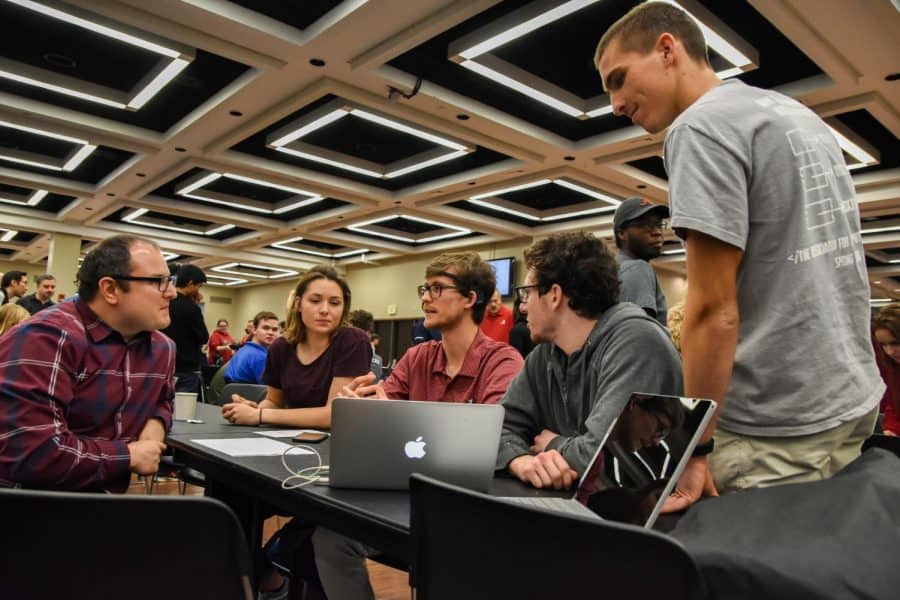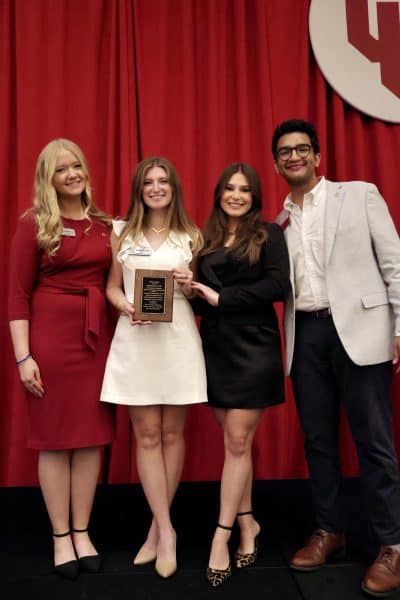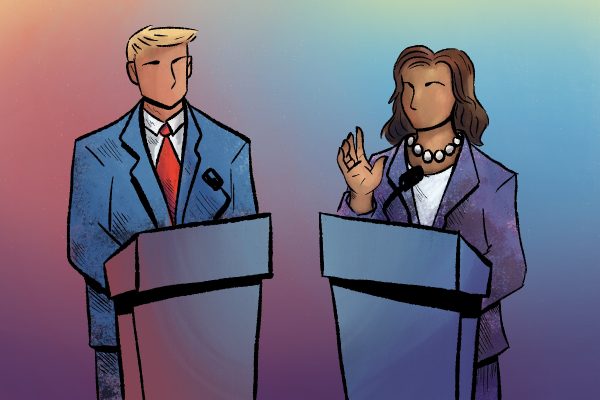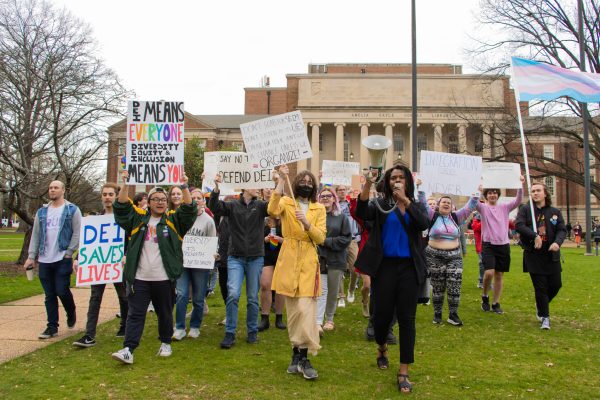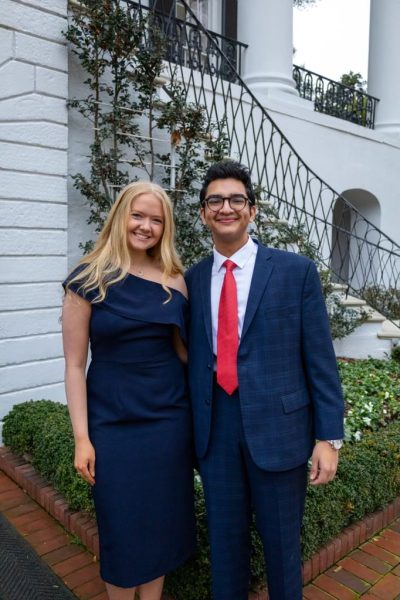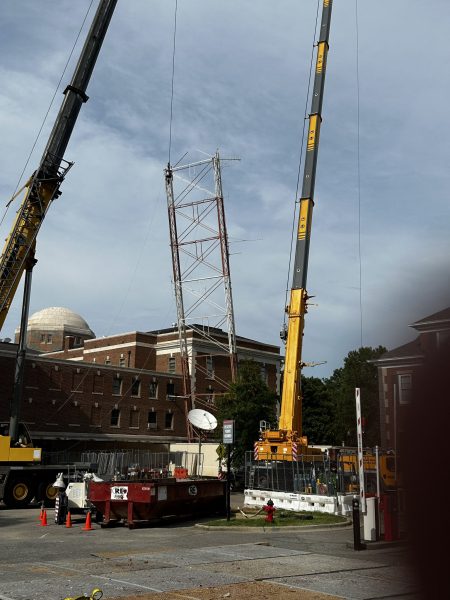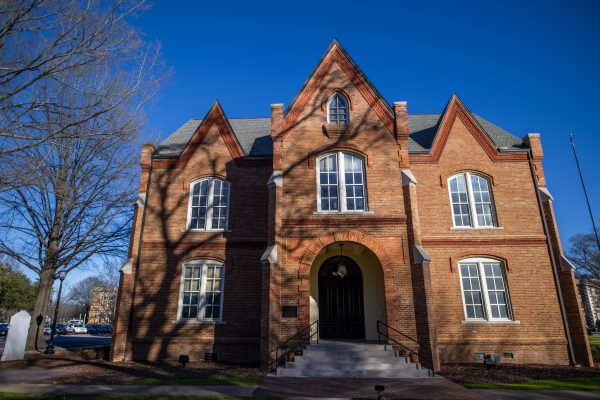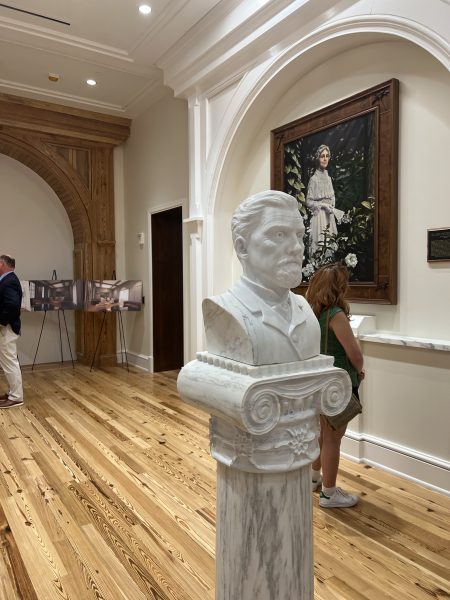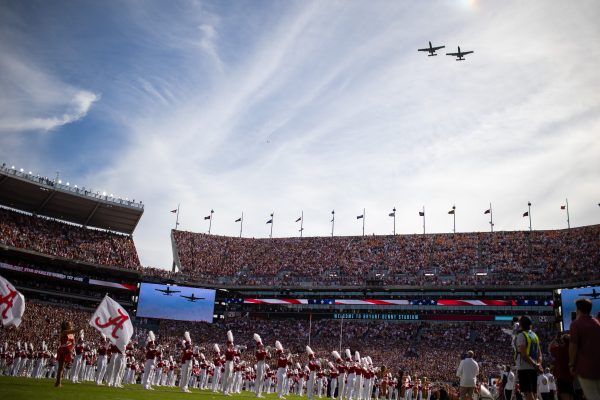CrimsonHacks provides place for innovation
March 25, 2019
Hundreds of students with an interest in computer design use their knowledge to create apps, games and websites at CrimsonHacks, a 24-hour event hosted by the CrimsonHacks executive team that allows student participants to get creative and invent something they are proud of.
“Our mission is to innovate the South,” Sponsorship Director Kedron Abbott said. “We’re really pushing to get really awesome students and incredible companies together here to build something awesome and really bring visibility to the South. There’s some really awesome things that are going on here, but they’re often unseen and untouched, and we have some really incredible talent here as well.”
Abbott, a junior majoring in computer science, has been involved with the event since the beginning in 2017. With this year marking the third annual CrimsonHacks, he said he is happy to see new participants and some who have been involved in the past. He also said CrimsonHacks isn’t just about “hacking.”
“A lot of people have misconceptions about hackathons,” Abbott said. “They think it’s some event where sketchy people do sketchy things with computers. It’s not that at all.”
“We have several students, actually over 200 students, from over 30 different universities that come together to build something awesome. So, think of it more like an invention marathon,” he said.
Students spent March 23-24 at the Ferguson Center taking on a full schedule of tech talks, workshops, networking with sponsors and creation time.
However, the event was not exclusive to computer science and computer engineering majors; it is available for all students. Abbott said having someone who is not technical can give a team an advantage. It allows the team to have a member with a fresh perspective on an invention to help decide whether the invention is user-friendly.
“It’s like a career fair but with a twist,” Abbott said. “Instead of just having to like dress up in suits and go and talk to different companies and stuff, these companies get to come out and engage with you and on top of that, they get to see like your skills in action.”
CrimsonHacks also gives students an opportunity to network with sponsors. Matt Loft, a software consultant with Pariveda Solutions, is able to build a trusted advisor relationship with students at the event. Loft said this is helpful when it comes to recruiting and also benefits the company by getting students interested in applying and possibly working there.
“For our sponsorship, we like to have people excited about programming, you know, and excited about doing these kind of jobs,” Loft said. “… It gets us more access to a wide variety of students from other schools as well as UA, which is really nice for us. We get to go out and kind of help them and start a relationship with our students the same way we do with our clients.”
Riley Howk, a sophomore majoring in management information systems, and her team created a goal tracking app called Achieve. The team believes that it is important for people to set a clear goal and have consistent accountability to reach achievement. Their app was created to make goal setting more effective.
“It’s a goal-tracking app combined with a social media app, so it allows you to create goals, and it keeps you accountable by sharing them with your friends and allowing your friends to join it,” Howk said.
Howk and her team kept each other accountable throughout the hackathon and achieved the goal they set for themselves. They wanted to create a mobile app for the first time by using various software such as Xcodes, Swift, Sketch and Firebase.
Amy Tucker, a freshman at Bevill State University majoring in computer science, said this was her first hackathon.
Tucker and her team created a virtual reality experience called Cloud Walk. The creation uses Google Street View to allow users to view destinations as if they were actually there. It was created so people are able to get a better view of places they may not be able to visit in real life. Users may only be in their living room, but they are able to see any destination they wish virtually.
“You can go to all of these famous landmarks, and the hope is that eventually there will be like facts and stuff that pop up and you can just kind of walk around a little bit and look at the views and stuff in VR like you’re actually there,” Tucker said.
Though the long hours of the event challenged her, Tucker said she enjoyed her experience and is thankful for the opportunity to participate.
“It’s been a really great experience,” Tucker said. “I’ve learned a lot, I’ve picked up a lot of skills, I’ve networked. The 24-hour thing is a little hard, but it was fun.”
Below is a list of winners from the event:
- First Place: Drowsy Driver:
- Amber Gupta (UA)
- Ajay Mehul (UA)
- Matt Creasey (UA)
- Second Place: Paper CV
- Vish Gonda (Georgia State)
- Chetan Velivela (Cornell)
- Third Place: Cl-ose Call
- Ryan Parker (Louisiana Tech)
- Butler Newman (UA)
- Chiweka Mdwazika (UA)
- Best Presentation – Outlast
- Naman Gupta (Auburn)
- Albert Wang (Auburn)
- Sumin Beasley (Auburn)
- Kegan van Ginkel (Auburn)
- Best Diverse Hack – Achieve
- Riley Howk (UA)
- Marlee Bryant (UA)
- Sarah Hahn (UA)
- Best Female Hack – Achieve
- Best Rookie Hack – Cl-ose Call
- Best Hardware Hack – Leap Into Safety
- Denver Ellis (Arkansas at Little Rock)
- Sunny Singh (Arkansas at Little Rock)
- Trent Burroughs (Arkansas at Little Rock)
- Ryan Hood (Arkansas at Little Rock)
- Best Team Spirit – Hang
- Nicholas Hartley (UA)
- Micah White (UA)
- Josh Chima (UA)
- Best use of AWS Amplify (sponsored by Amazon Web Services) –
- 1st place: Accidentally
- Anisha Nizar Ali (Samford)
- Gabby Hoefer (Samford)
- Lyra Lapuyade (Samford)
- 2nd place: Food for Change
- Kyle Wesoloski (UA)
- Roland Burks (Samford)
- Bree Day (Georgia Gwinnett College)
- 3rd place: Polyg.io
- Jeffery Deetman (Auburn at Montgomery)
- 1st place: Accidentally
- Lockheed’s Favorite Hacks (Sponsored by Lockheed) –
- 1. LockAR
- Luke Smalley (GSU)
- Samuel Yi (GSU)
- 2. Schedule Optimizer
- Chloe Flack (UA)
- 1. LockAR
- Best Event-Driven Hack (Sponsored by CGI) – Trashtag
- Ajinkya Nawarkar (Mississippi State)
- Christian Bush (Mississippi State)
- Best Hack for Social Good (Sponsored by Pariveda Solutions) – Drowsy Driver
- Best Safety Related Hack (Sponsored by International Paper) – Drowsy Driver
- Best use of Google Cloud Platform (Sponsored by Google Cloud Platform) – LockAR
- Best Domain Name from Domain.com (Sponsored by Domain.com) – Accidentally
- Best use of Snap Kit’s SDK (Sponsored by Snapchat) – Achieve

